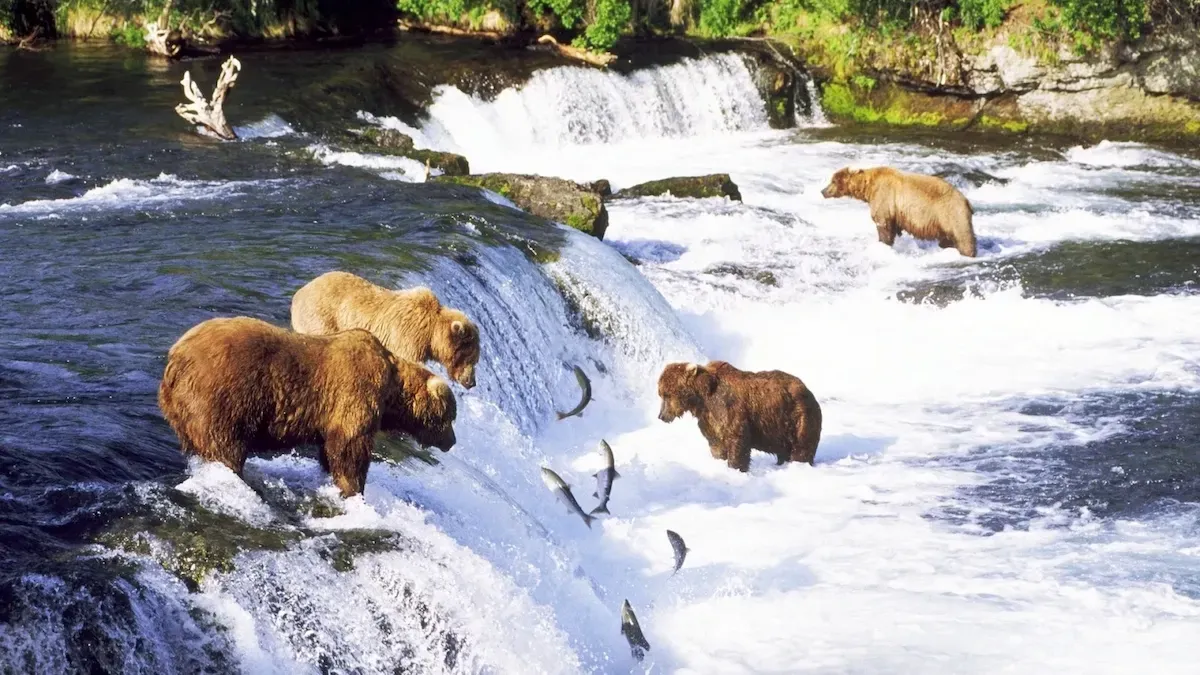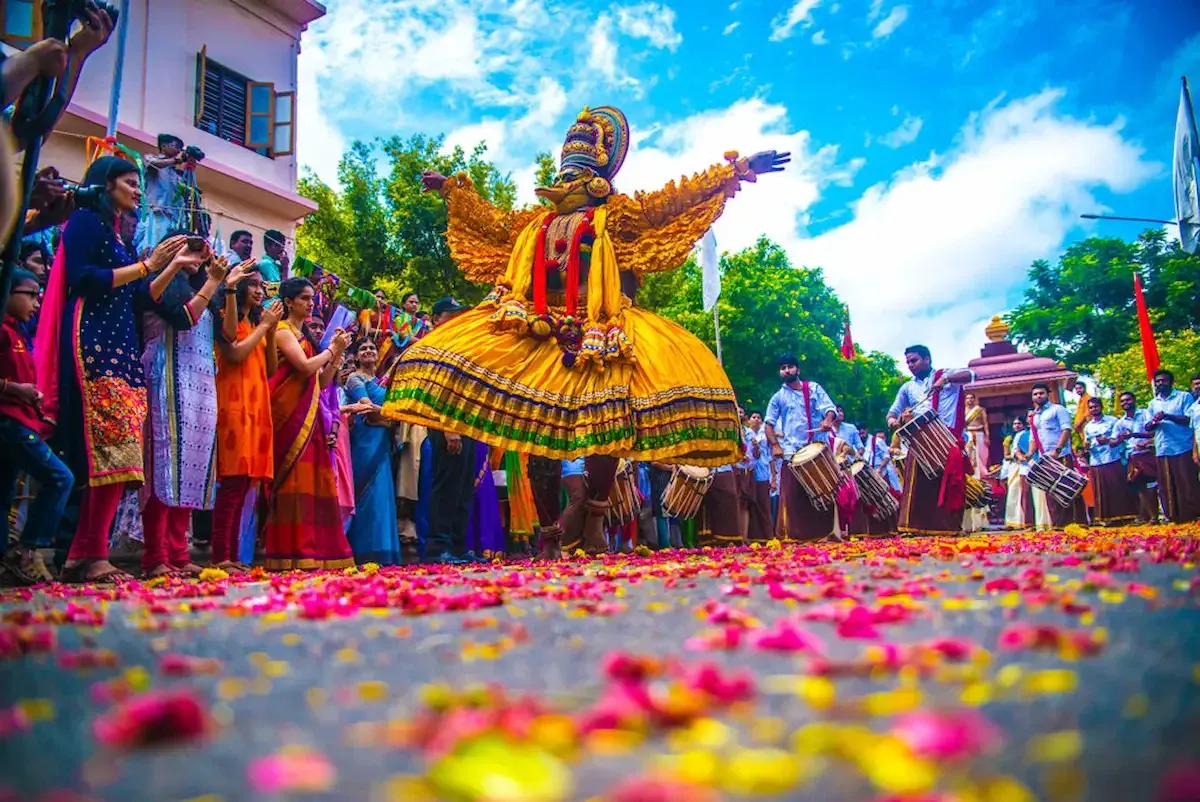Traditional Alaska Native cuisine is not merely a source of nourishment; it is an inseparable part of the culture, history, and spiritual life of the local communities. Developed over thousands of years, these traditional dishes reflect a profound connection to Alaska’s harsh yet abundant natural environment, while encapsulating stories and valuable lessons about adaptation, creativity, and respect for nature. Join us on a journey with “Travel Around the World” to explore the distinctive flavors and cultural significance behind the traditional foods of Alaska Natives.
Ingredients From the Wild
Alaska Native cuisine is built upon a rich array of natural ingredients gifted by the land. From vast oceans to sprawling forests, towering glaciers to expansive tundras, each environment contributes unique resources to create the diversity and uniqueness of Alaskan cuisine.
Seafood – A Lifeline From the Ocean
With its extensive coastline and dense network of rivers and lakes, seafood plays an essential role in the diet of Alaska Natives. Salmon, cod, halibut, herring, seal, whale, shrimp, crab, clams, and mussels are precious gifts from the ocean, providing not only abundant protein but also essential vitamins and minerals.

Game Meat – Flavors From the Forest
Aside from seafood, game meat is another indispensable element of traditional Alaskan cuisine. Reindeer, moose, bears, hares, and birds are crucial sources of protein, especially for communities living inland. Rich in nutrients, game meat helps Alaska Natives withstand the harsh climate.

Wild Plants – Treasures From the Tundra and Forests
In addition to relying on animals, Alaska Natives have mastered the art of utilizing the region’s rich array of wild plants. Berries such as blueberries, raspberries, wild strawberries, and cloudberries offer delicious flavors along with vitamin and antioxidant benefits. Wild greens, roots, mushrooms, and seaweed are also harvested and transformed into nourishing meals.

Traditional Preparation Methods
To preserve and prepare these diverse ingredients, Alaska Natives have developed unique methods, well-suited to the climate and semi-nomadic lifestyle. These techniques not only produce delicious dishes but also showcase their ingenuity and survival skills.
Smoking and Drying – The Essential Preservation Methods
In cold climates with limited sunlight, smoking and drying are essential food preservation techniques. Salmon, game meat, and seafood are smoked using alder wood or dried in cold winds to extend their shelf life. Smoking not only preserves food but also infuses it with distinctive and appealing flavors.
Fermentation – Bold Flavors and Nutrition
Fermentation is another traditional method used to create unique and nutrient-rich dishes. Fish, roe, seal meat, and other ingredients are fermented in ground pits or wooden containers to develop a tangy flavor and enhanced nutritional value. Fermented foods provide natural probiotics and support digestive health.
Boiling and Grilling – Simple Yet Authentic
Boiling and grilling are straightforward cooking methods that retain the natural flavors of the ingredients. Seafood, game meat, and vegetables are often boiled in water or grilled over hot coals to create hearty and flavorful dishes. Grilling on heated stones is another traditional practice employed for cooking meat and fish.

Iconic Traditional Dishes
Alaska Native cuisine is incredibly diverse, with each community and region offering its own characteristic dishes. However, a few key dishes have gained widespread popularity and showcase the essence of this traditional cuisine.
Akutaq – The Unique “Eskimo Ice Cream”
Akutaq, or “Eskimo ice cream,” is a uniquely traditional dessert of the Yup’ik and other Indigenous peoples of Alaska. Made by mixing animal fat (often seal or reindeer fat) with fish like whitefish, along with berries such as blueberries, cranberries, and cloudberries, Akutaq offers a rich, creamy texture and a sweet-tangy flavor. Although called “ice cream,” Akutaq has a soft, fluffy consistency and melts in your mouth.

Muktuk – Nutritious Whale Skin and Blubber
Muktuk is a traditional dish made from whale skin and blubber, particularly cherished among Inuit and Yup’ik communities. Often sourced from bowhead, beluga, or narwhal whales, Muktuk can be eaten raw, boiled, pickled, or fermented. Rich in vitamin C and Omega-3 fatty acids, this dish plays a vital role in the diets of Arctic inhabitants where fresh greens and fruits are scarce.
Fry Bread – A Cultural Blend
Fry bread, a type of fried flatbread, is popular among many Indigenous communities in North America, including Alaska. Crafted from flour, salt, sugar, and shortening (or oil), fry bread is kneaded and fried to golden perfection. It has a crispy crust and soft interior, often served with honey, berry jam, or stews. Though not originally from Alaska, fry bread has become a staple among Alaska Natives, representing cultural fusion and adaptation.

Smoked Salmon – Alaska’s Signature Flavor
Smoked salmon is a world-renowned Alaskan delicacy, beloved by locals and outsiders alike. Alaskan salmon, often Chinook, Sockeye, or Coho, is smoked using alder wood or other aromatic woods to create a distinct, robust flavor. Smoked salmon is enjoyed on its own, paired with bread, in salads, or incorporated into various dishes. It remains a prized gift of nature and a testament to the culinary expertise of Alaska’s Indigenous people.
Soups and Stews – Warming and Nutritious
Soups and stews are staples of Alaskan traditional cuisine, especially during icy winters. These dishes range from seafood soups (with salmon, crab, or shrimp) to game meat stews (featuring reindeer or moose), combined with local vegetables and herbs. Offering warmth and sustenance, these dishes are crucial for maintaining health in severe climates. Each community has distinct recipes, enriching the variety within this culinary tradition.
Cuisine and Culture – A Profound Connection
The traditional cuisine of Alaska Natives is not just about food; it carries significant cultural, social, and spiritual meaning. From hunting and gathering, to preparation and communal sharing, it reflects deep ties to nature, a spirit of community, and ancestral values passed down through generations.
Respect for Nature and Sustainability
Alaska Native cuisine is rooted in profound respect for nature and its resources. Adhering to sustainable hunting and gathering practices ensures ecological balance and the availability of food for future generations. For Alaska Natives, protecting nature is synonymous with preserving their culture and securing their future.
Sharing and Community Spirit
Food sharing holds tremendous importance in Alaska Native culture. After hunts or harvests, people share food with the entire community, including elders and those in need. This practice fosters solidarity and unity, ensuring everyone has enough while reinforcing communal bonds. Shared meals, festivals, and rituals are opportunities to celebrate traditional cuisine and cultural values together.
Cuisine as a Cultural Identity
Traditional cuisine is a vital component of Alaska Native cultural identity. Every dish, ingredient, and preparation method tells a story and embodies cultural values. Preserving and promoting this cuisine not only safeguards heritage but also strengthens ties between past, present, and future generations.

Conclusion
Exploring the traditional cuisine of Alaska Natives is a fascinating journey into culture, history, and the symbiotic relationship between humans and nature in this unique land. From fresh seafood to flavorful game meat, from wild berries to inventive preparation methods, Alaska Native cuisine offers unforgettable taste experiences. Visit Alaska to immerse yourself in its rich culinary traditions and discover the cultural depth hidden within each dish.